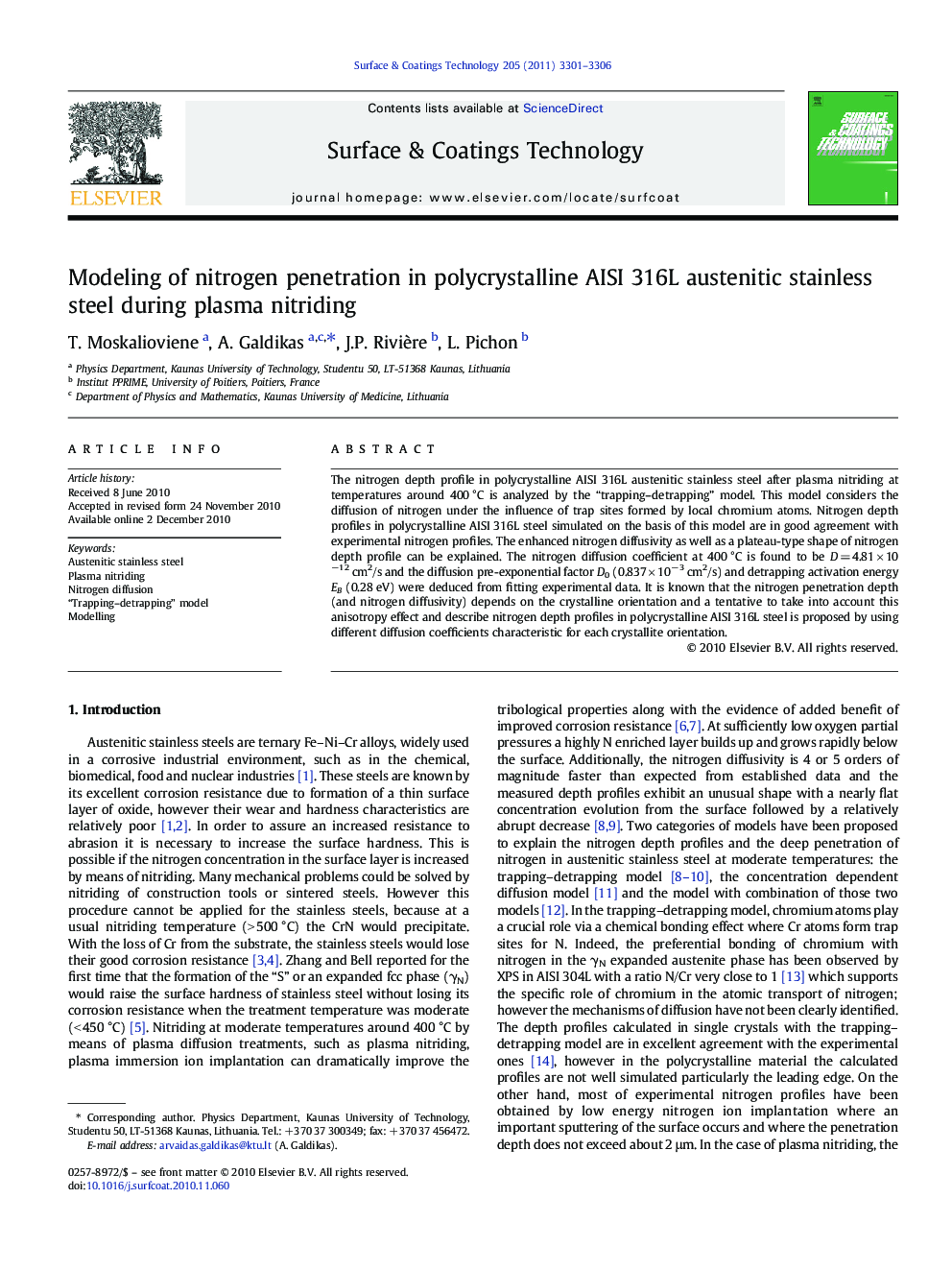| Article ID | Journal | Published Year | Pages | File Type |
|---|---|---|---|---|
| 1659458 | Surface and Coatings Technology | 2011 | 6 Pages |
The nitrogen depth profile in polycrystalline AISI 316L austenitic stainless steel after plasma nitriding at temperatures around 400 °C is analyzed by the “trapping–detrapping” model. This model considers the diffusion of nitrogen under the influence of trap sites formed by local chromium atoms. Nitrogen depth profiles in polycrystalline AISI 316L steel simulated on the basis of this model are in good agreement with experimental nitrogen profiles. The enhanced nitrogen diffusivity as well as a plateau-type shape of nitrogen depth profile can be explained. The nitrogen diffusion coefficient at 400 °C is found to be D = 4.81 × 10−12 cm2/s and the diffusion pre-exponential factor D0 (0.837 × 10−3 cm2/s) and detrapping activation energy EB (0.28 eV) were deduced from fitting experimental data. It is known that the nitrogen penetration depth (and nitrogen diffusivity) depends on the crystalline orientation and a tentative to take into account this anisotropy effect and describe nitrogen depth profiles in polycrystalline AISI 316L steel is proposed by using different diffusion coefficients characteristic for each crystallite orientation.
Research Highlights►Nitrogen mass transport mechanism in nitrided polycrystalline AISI 316L is analyzed. ►Effects of nitrogen diffusivity anisotropy in plasma nitrided AISI 316L are analyzed. ►The nitrogen diffusion model based on trapping–detrapping mass transport mechanisms.
